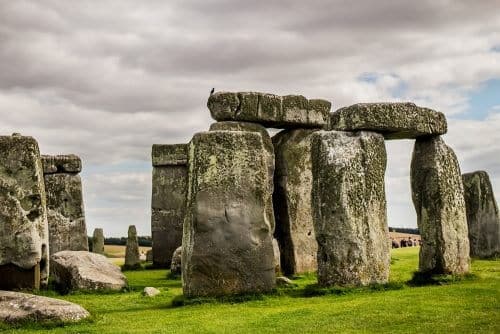The chemical composition of the megalithic sarsen stones finally reveals where the big stones of Stonehenge really came from
Translation: Ziv Adaki

It seems that there is one source for most of the golem sandstone rocks - called Saracen stones and of which the well-known Stonehenge site in Britain is made up. They originate from West Woods, Wiltshire, which is 25 kilometers from the site, according to the analysis of the chemical composition of the rocks.
The findings confirm the theory that the stones were brought to the site at about the same time and confound previous assumptions that one Saracen stone, the "heel stone", originated in the vicinity of the site and was placed there before the others. The results of the research may help scientists identify the route by which the ancient builders of the site may have taken the huge rocks to their destination.
"Until recently, it was impossible to identify the origin of a stone like the Saracen," says David Nash, lead author of the paper. "We were really excited by the use of 21st century science to understand the Neolithic past and answer a question that has occupied archaeologists for centuries."
Since until now there was no technology to determine the origins of the giant sarsen stones, which stand up to 9 meters high, weigh about 25 tons and make up most of the Stonehenge site, the research focused mostly on the smaller "blue stones" of the monument - different types of rocks which were clearly not collected from the local environment.
To learn where the huge rocks came from, Nash and his colleagues used a portable device that performs X-ray fluorescence spectrometry. First, they characterized the chemical composition of the rocks, then conducted a statistical analysis of the information to determine their degree of chemical alteration. In the next step, the researchers combined two chemical characterization methods: (1) plasma mass spectrometry and (2) atomic emission spectrometry, to samples from the core of the Sarsen stone, which was previously drilled to its depth, and from a variety of Sarsen rocks throughout southern Britain. After comparing the rock composition signatures, Nash and his collaborators were able to point to West Woods as the earliest home of the Saracen stones.
The reason why the builders chose to erect the monument on this particular site remains unknown, although the researchers believe that it is possible that the dimensions and composition of the stones from West Woods, as well as their accessibility to the builders, had an influence on their choice.
More of the topic in Hayadan:

2 תגובות
If it doesn't interest you, one who doesn't know, that's your right, but you should also keep an eye open for cultures other than Judaism, because the world is big and wide, and if you limit your eyes to Jewish culture only, you'll make your worldview narrow and limited! It's interesting to me, I think it's a device for measuring time or a giant clock that the sunlight moves in such a way that it looks dynamic and the people of the ancient world know when to sow wheat for example... This is just my opinion of course and you have the right to disagree with me, I'll accept it!
All in all, a primitive temple from the Stone Age. To think about the tremendous effort that the Jews invested in building the house of God is even more crazy and unbelievable.